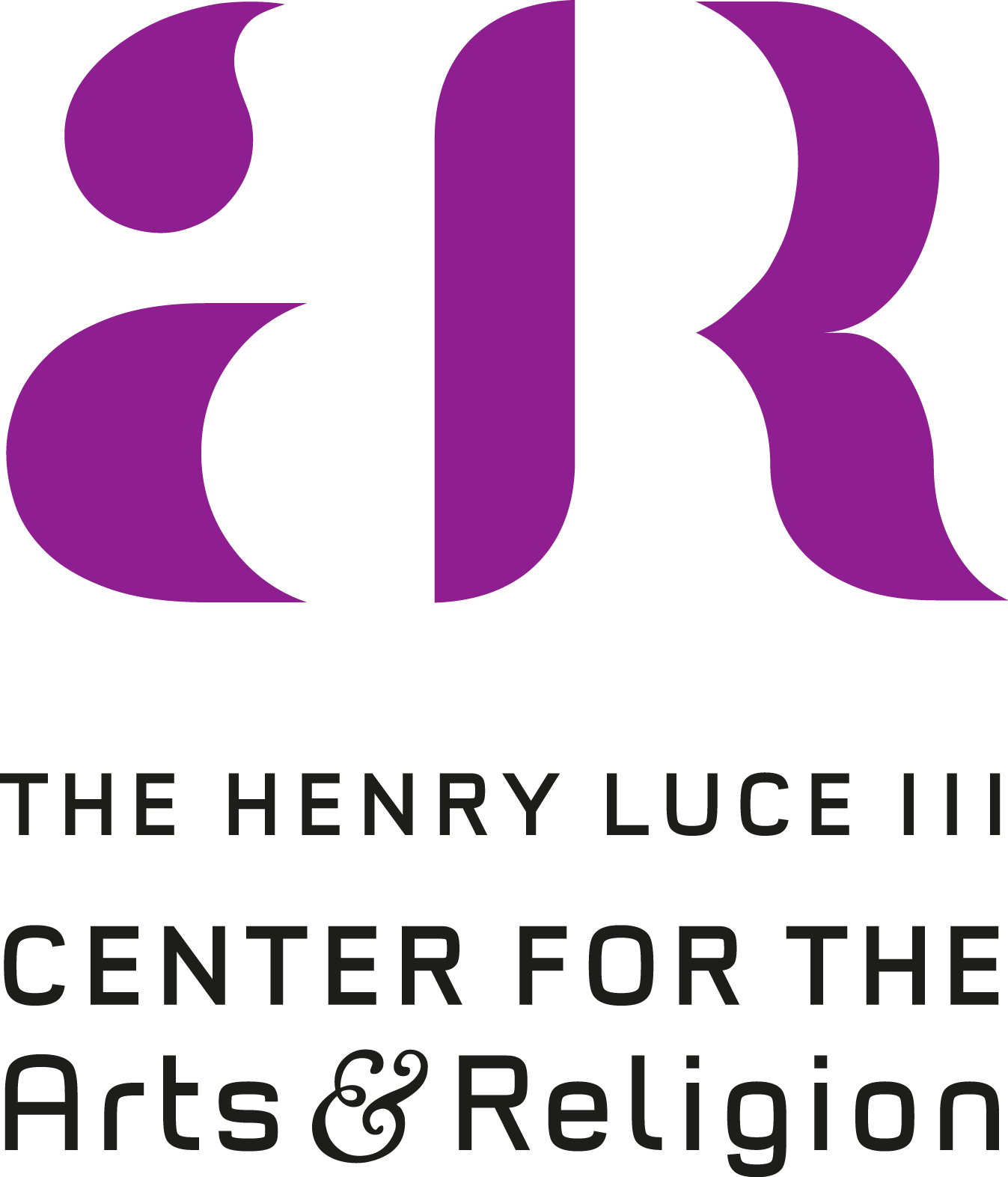Peter Halliday
The Administration of the Lord's Supper or Holy Communion, 1976
25” x 22.5”
Goose quills with Chinese ink, Water colour, raised and burnished gold leaf on loosely stretched fine calfskin vellum
Halliday’s calligraphic panel presents the text of the Holy Communion service from the 1662 Book of Common Prayer, the liturgical handbook for the Church of England. The form of the writing is immediately apparent: Halliday divides the text into four sections separated by a by a cruciform shape. Echoing a medieval convention, Halliday sets the main body of the text in black, with rubrics for the priest and the first lines of each prayer in red. At center, a medieval-style cross with gilded circular border is surrounded by the pivotal words of the Lord’s Supper in loud blue capitals.
The words at top center suggest the main interplay of form and content: “Take, eat; this is my Body which is given for you: Do this in remembrance of me.” These words, quoted from New Testament narrations of the Last Supper (Luke 22:19; 1 Corinthians 11:24), refer to Christ giving his body up to death on the cross. In the liturgy, they refer to each Christian taking the bread, representing Christ’s body. But this “body” suggests more layers.
For me, “this is my Body” also suggests the body of the page itself—the skin of a slaughtered calf prepared as parchment. This writing surface was the favored tool for the medieval monks whom Halliday counts as his predecessor. Many viewers today will immediately notice this due to ethical concerns about animal treatment. But medievals were well aware of the analogy between Christ, the Word made Flesh, giving up his body, and the many animals who gave up their bodies so scribes could write Christ’s teachings. To teach the Gospel that gives life, death was ironically required. Even the bright red of Halliday’s ink may suggest the service’s “blood of the New Testament.” For today’s calligraphers who use vellum—no paper yet matches its smoothness, durability, and appearance—this imposes an obligation to choose only the most important words to write.
In ritual, words are not just lovely. They do things. The words of this ritual, in Christian theology, create Christian community. Paul compares this community to a body, a body which functions harmoniously despite the diversity of its parts (1 Corinthians 12). On the body of this fleshly calligraphy, there are many different parts: different scripts, colors, and textures of writing. Halliday intentionally wrote the scripts here using more variety, less perfect formality, to keep the letters lively and create different textures of writing which balance each other well on the page. (Try this: stand away from this piece far enough to see the blocks of writing rather than the words and letters.) These letters are close together, densely knit—living in community, harmony with diversity, just as Paul writes the body of Christ should do.
Finally, one line of the service proclaims: “Let your light so shine before men, that they may see your good works, and glorify your Father which is in heaven” (Matthew 5:16). Halliday’s response to this is the good work of this art, the light that so shines through its use of gold in the middle.
—Homrighausen
Further Reading:
Halliday, Peter, ed. “Peter Halliday.” In Calligraphy Masterclass, 122–27. London: Bloomsbury Books, 1995.
Harris, David. “Peter Halliday.” In Calligraphy: Modern Masters—Art, Inspiration & Technique, 108–11. New York: Crescent, 1991.
Halliday, Peter. Calligraphy: Art and Colour. London: B. T. Batsford, 1995.
———, ed. Holy Writ: Modern Jewish, Christian, and Islamic Calligraphy. Lichfield: Lichfield Cathedral, 2014.





